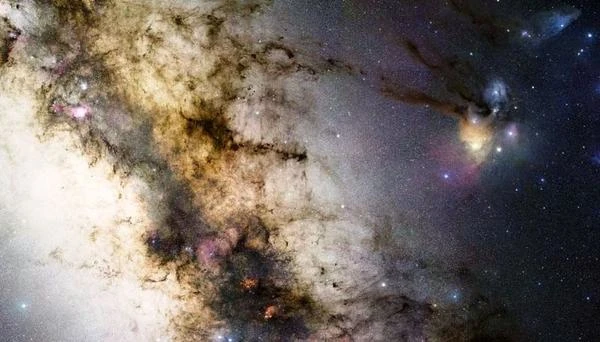
The Milky Way is a spiral galaxy containing hundreds of billions of stars, as well as dark matter and clouds of gas and dust. Its galactic center hosts a supermassive black hole, Sagittarius A*, which influences the dynamics of the entire galaxy. Exploring the structure and heart of our galaxy helps us better understand the evolution of spiral galaxies in the universe.
The center of the Milky Way remains partially obscured. Sagittarius A* is surrounded by clouds of gas and stars orbiting at high speeds. Recent observations in infrared and radio waves allow us to track the movement of these stars and study the extreme physics around the black hole.
Thanks to space telescopes and radio instruments, astronomers map the Milky Way in detail, measure stellar velocities, identify star-forming regions, and study the distribution of dark matter. These observations help reconstruct the history and dynamics of our galaxy.
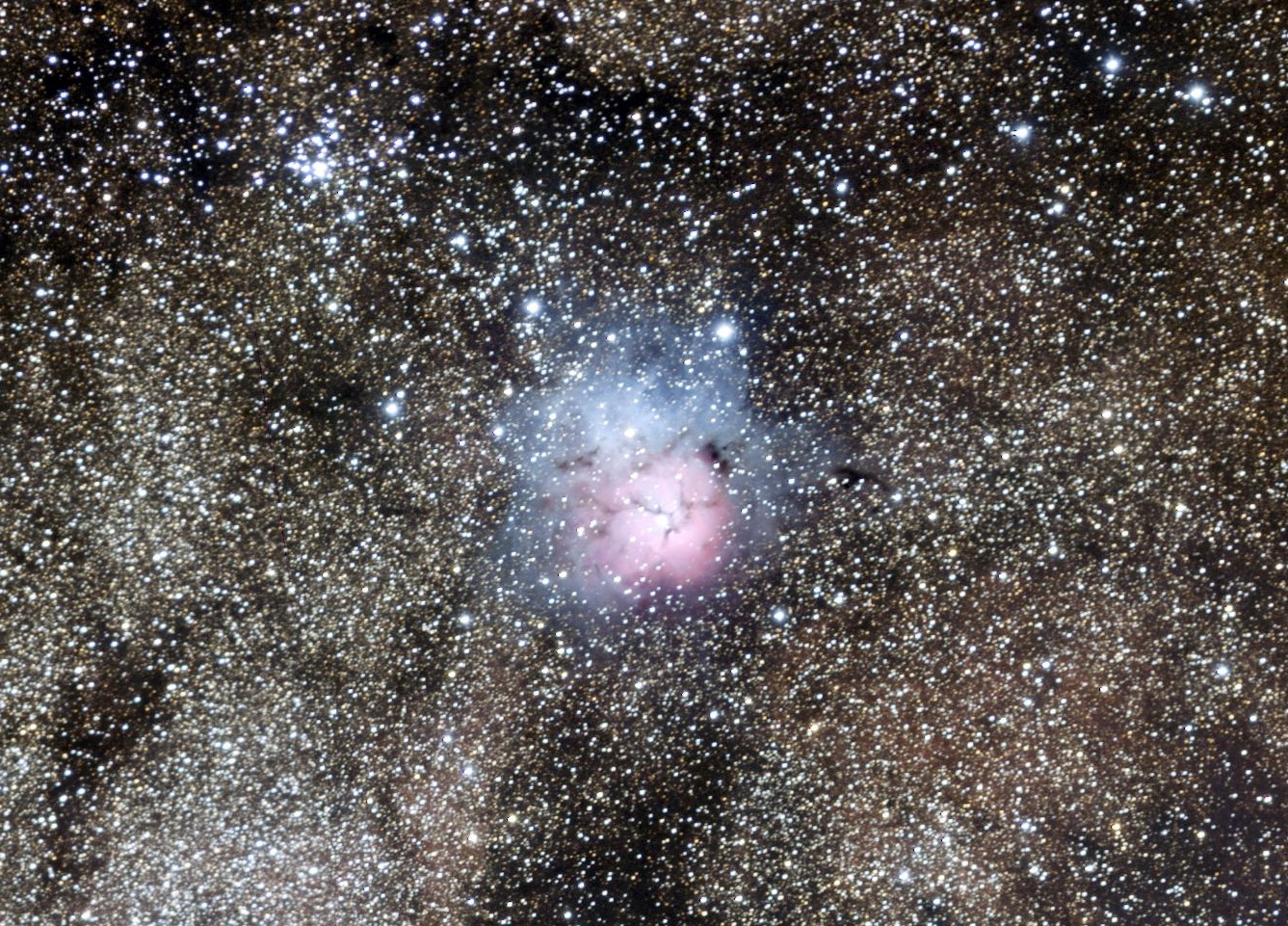
The Trifid Nebula, or M20, is a nebula located in the constellation Sagittarius, about 5,200 light-years from Earth. It is famous for its structure of three distinct lobes, separated by dark dust lanes, hence its name. The Trifid is both an emission nebula, where gas is excited by young, massive stars, and a reflection nebula, where dust scatters starlight.
This nebula is a true stellar formation laboratory. The dark dust regions hide proto-stars in the process of formation, while the bright emissions allow the study of interactions between ultraviolet radiation and ionized gas. The Trifid perfectly illustrates the coexistence of stellar birth phenomena and complex interstellar structures.
Its apparent size is about 28 arcminutes, corresponding to ~40 light-years in real diameter, and its brightness is dominated by recently formed massive stars. The study of the Trifid contributes to our understanding of the physical processes governing star formation and the evolution of nebulae in our galaxy.
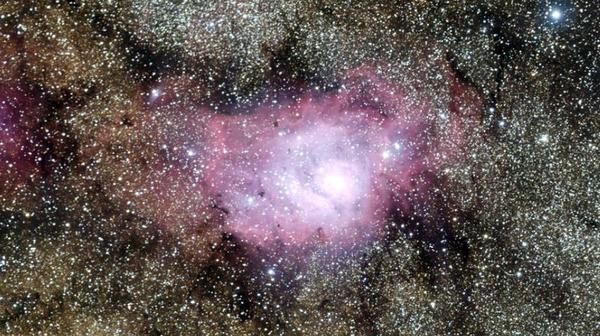
The Lagoon Nebula, or M8, is a diffuse nebula located in the constellation Sagittarius, about 4,100 light-years from Earth. It is an active star-forming region where ionized gas emits characteristic reddish light, mainly due to the excitation of hydrogen atoms by young, massive stars. Its complex shape, with cavities and dust filaments, has earned it the name evoking a celestial "lagoon."
M8 contains many newly formed stars and open clusters, such as the NGC 6530 cluster. The dark gas and dust clouds are also the site of proto-stars and protoplanetary disks. Observing this nebula allows the study of interactions between ultraviolet radiation, stellar wind, and the surrounding gas.
The apparent size of M8 is about 90 arcminutes, corresponding to ~110 light-years in real diameter. Its study helps better understand the mechanisms of star formation in our galaxy and the effects of stellar feedback on interstellar clouds.
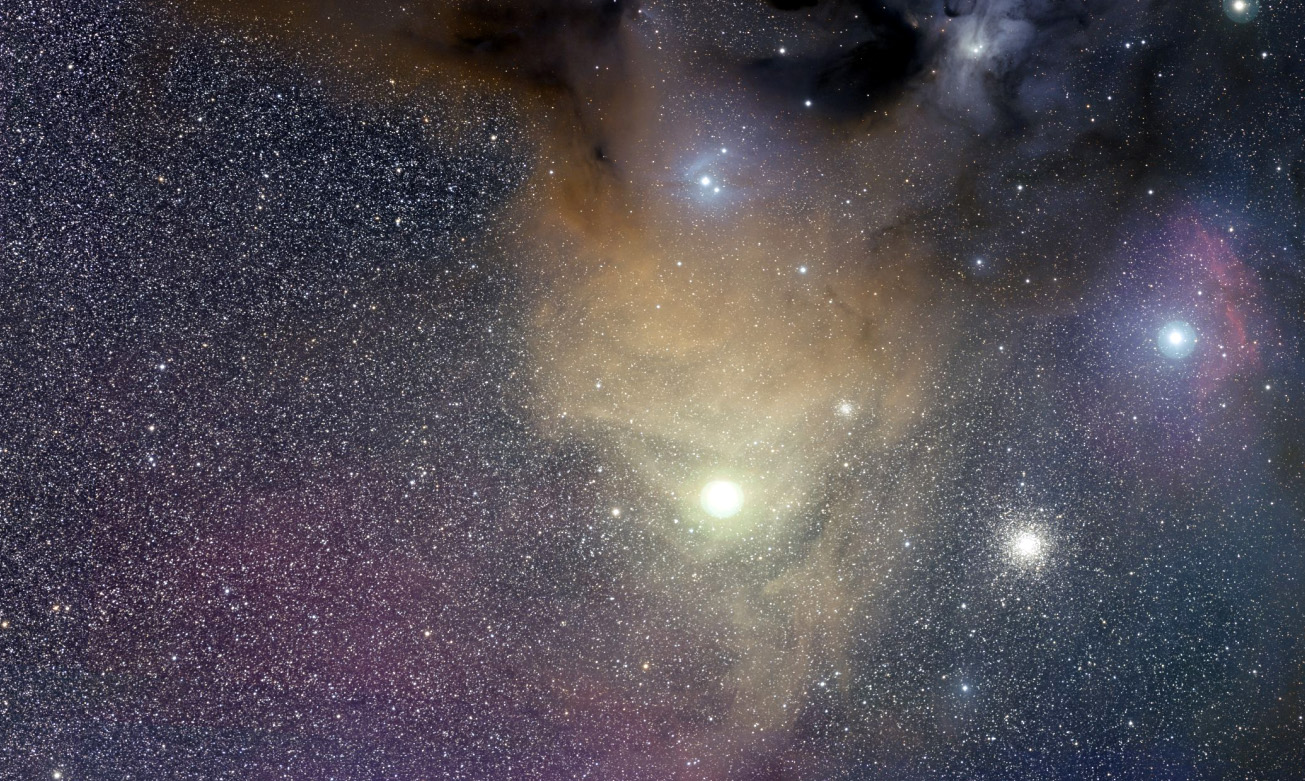
Antares is a red supergiant star of spectral type M1.5 Iab, located in the heart of the constellation Scorpius, about 550 light-years from Earth. It is one of the brightest and most massive stars in our galaxy, with a luminosity about 10,000 times that of the Sun and a radius estimated at nearly 700 times that of the Sun.
Its intense red color is due to its relatively low surface temperature, around 3,400 K, typical of red supergiants. Antares is in an advanced stage of stellar evolution and is approaching the end of its active life, making it a likely candidate for a supernova explosion in a few hundred thousand years.
Antares is surrounded by a blue-white companion, Antares B, visible through a telescope. The study of this star allows us to explore the dynamics of supergiants, stellar mass loss through stellar wind, and the formation of circumstellar clouds rich in heavy elements, essential for galactic chemistry.
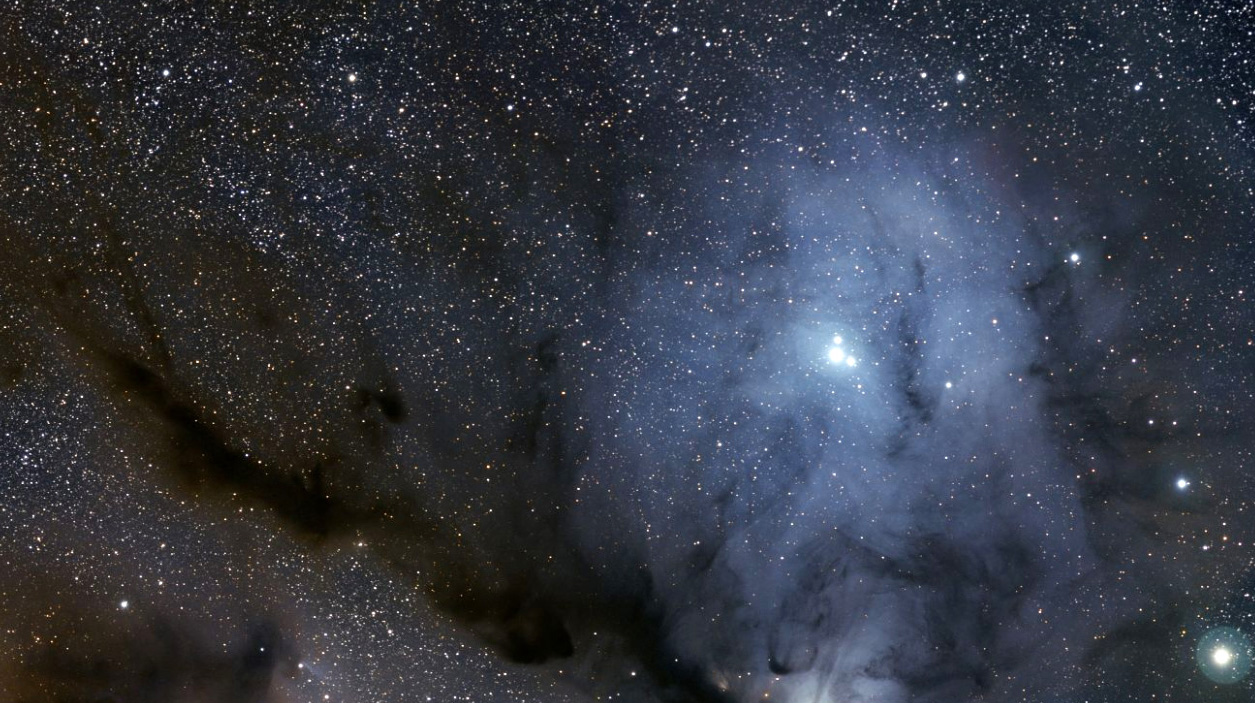
The Rho Ophiuchus Cloud is a vast molecular complex located about 400 light-years from Earth, in the constellation Ophiuchus. It is one of the closest regions of active star formation, hosting many clusters of young stars and proto-stars still enveloped in gas and dust.
This region is characterized by dense, dark clouds that appear dark in visible light but glow in the infrared due to the radiation from young stars. Rho Ophiuchus is particularly studied to understand the early stages of star formation and the evolution of protoplanetary disks around young stars.
The complex extends over several tens of light-years and contains multiple filaments and cavities created by stellar winds and local supernova explosions. Its study helps better understand the physics of molecular clouds and the dynamics of star-forming regions in our galaxy.
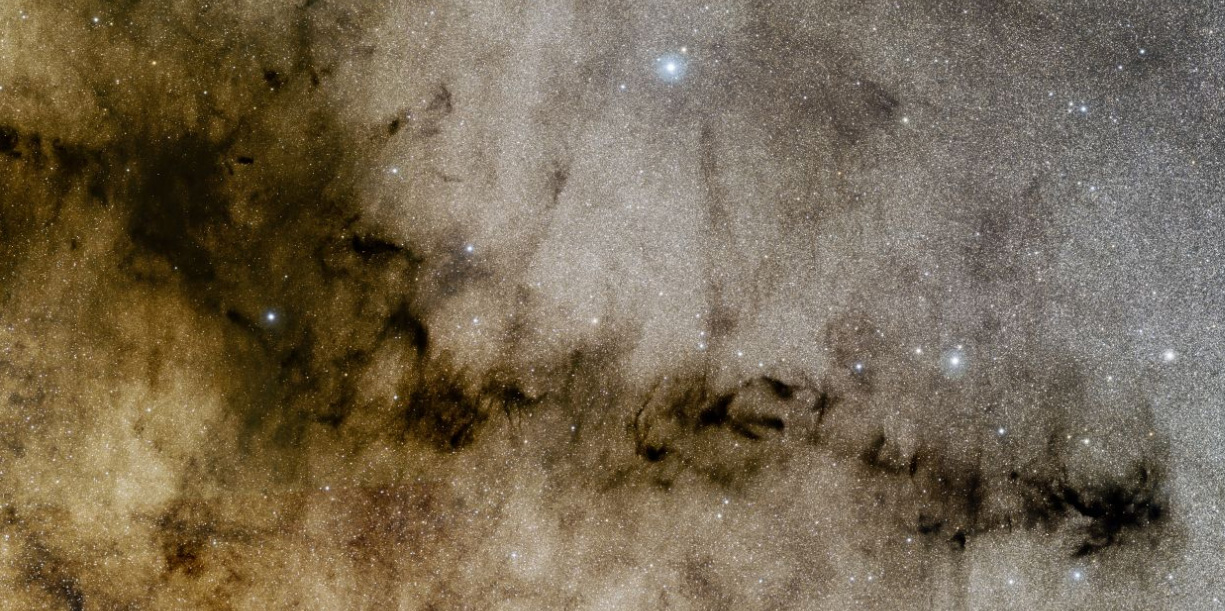
The Pipe Nebula is a dark dust cloud located in the constellation Sagittarius, about 600 light-years from Earth. It is distinguished by its characteristic silhouette that resembles the shape of a pipe, hence its name. This nebula is a dense and cold region, obscuring the light of background stars and appearing as a black cloud in optical images.
The Pipe is a typical example of a dark nebula, where the density of gas and dust prevents the formation of visible light. It contains multiple dense cores that can serve as sites of star formation, although its stellar activity is relatively low compared to regions like the Trifid or Lagoon.
Its study helps understand the structure of molecular clouds, the distribution of interstellar dust, and the physical conditions necessary for the emergence of new stars. The Pipe Nebula illustrates how cold, dense matter shapes the appearance of the night sky.
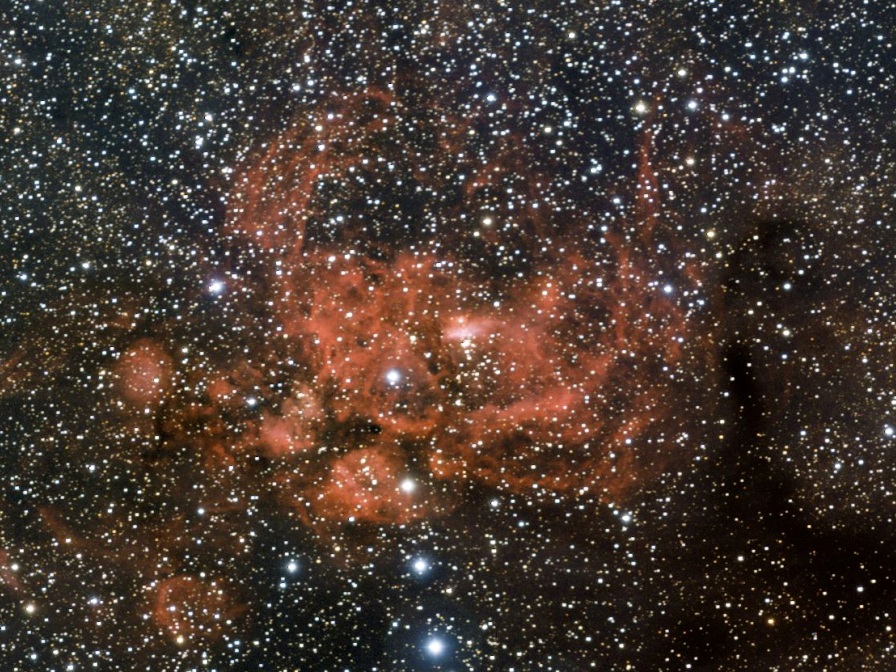
The War and Peace Nebula, or NGC 6357, is a vast star-forming region located in the constellation Scorpius, about 6,500 light-years from Earth. It is sometimes nicknamed the "Lobster Nebula" due to its characteristic shape. This nebula is a dynamic site where young, massive stars emit stellar winds and ultraviolet radiation, sculpting the surrounding gas and dust clouds.
At the heart of NGC 6357 lies the Pismis 24 cluster, one of the youngest and most massive in our galaxy. The study of this region helps better understand the processes of star formation, the dynamics of stellar winds, and the evolution of molecular complexes in the Milky Way.
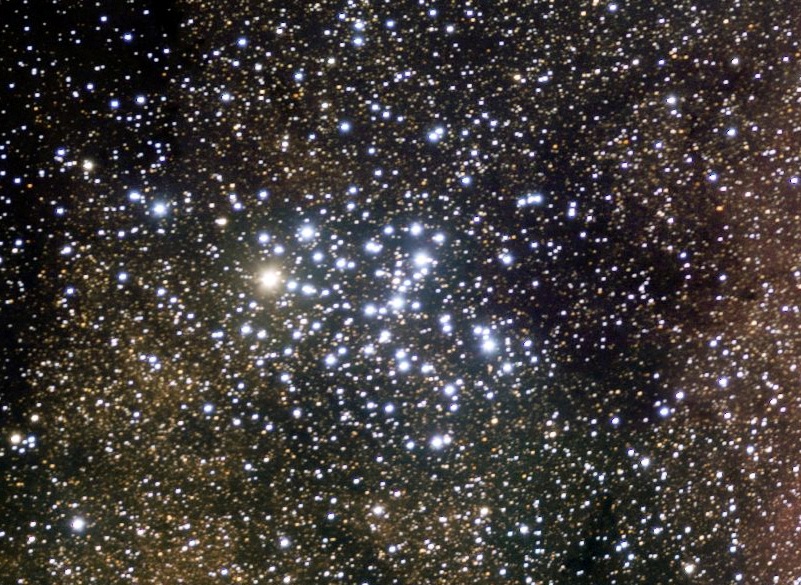
The Butterfly Star Cluster, or NGC 6231, is a young open cluster located in the constellation Scorpius, about 5,200 light-years from Earth. It is named for the apparent arrangement of its bright stars, which resembles the shape of a butterfly. This cluster mainly contains massive O and B type stars, very luminous and relatively young, only a few million years old.
The study of NGC 6231 helps understand the formation and evolution of open star clusters, as well as the impact of massive stars on their environment. The stellar winds and intense radiation from the Butterfly stars influence the distribution of gas and dust, promoting the formation of new stars in the surrounding regions.
Its apparent size is about 16 arcminutes, corresponding to a real radius of about 20 light-years. The Butterfly Star Cluster is a key example of the dynamics of young, massive stars within the molecular complexes of our galaxy.
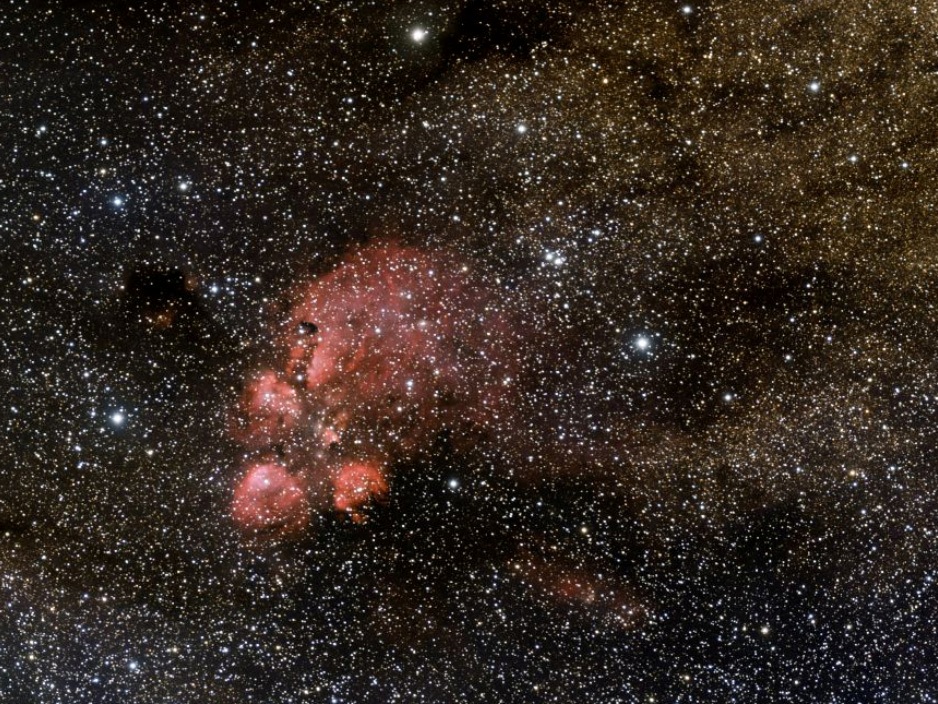
The Cat's Paw Nebula, or NGC 6334, is a vast star-forming region located in the constellation Scorpius, about 5,500 light-years from Earth. Its name comes from the particular shape of its bright and dark filaments, which resemble a cat's paw print. It is an emission nebula, where ionized gas glows under the effect of radiation from young, massive stars.
This region contains many star clusters in formation, as well as dense molecular clouds. The study of NGC 6334 helps better understand the physics of interstellar clouds, the processes of star formation, and the influence of stellar winds on the galactic environment.
The Cat's Paw Nebula extends over several tens of light-years, and its observation in the infrared reveals structures and proto-stars still invisible in visible light. It is a natural laboratory for the study of young, massive stars and their interactions with the interstellar medium.